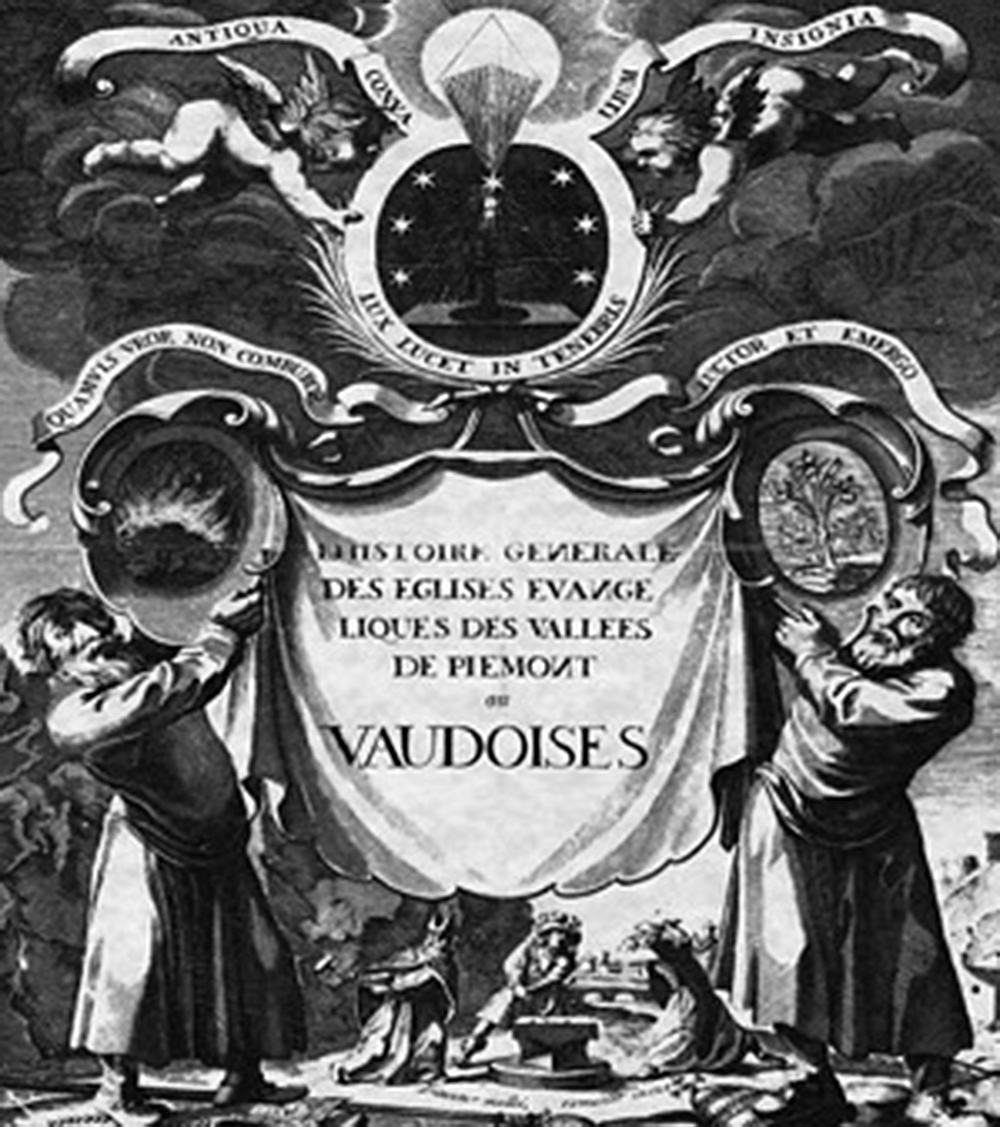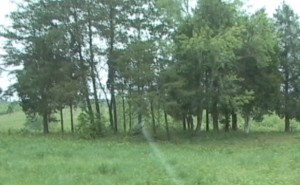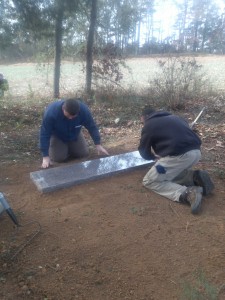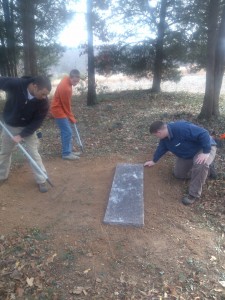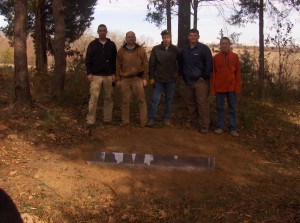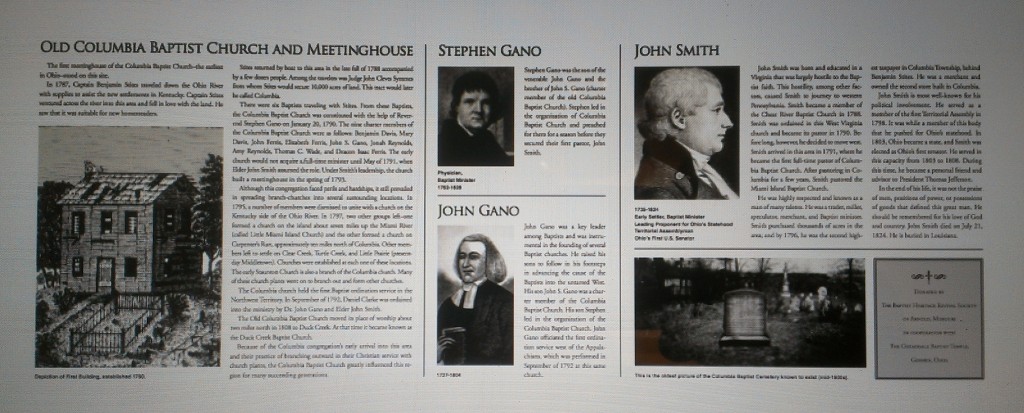2013 Projects
There are two projects on this page.
SAMUEL HARRISS MARKER PROJECT – COMPLETED NOVEMBER 2013
In this obscure clump of trees near rural Chatham, Virginia, lies the remains of one of the most effective evangelists America has ever produced-Samuel Harriss. This burial site has been mostly unkept and largely forgotten about for many years. We became impressed by the Lord that something needed to be done here. The property recently changed hands from descendants of Harriss to another party. The new owners were tracked down and agreed to allow a modest flat stone to be placed here. Donations were received and the $2,000.00 was raised to do just that. In November of 2013 the Baptist Heritage Revival Society had the privilege of placing a marbled, flat slab, granite marker on this site.
OLD COLUMBIA BAPTIST CHURCH / CEMETERY PROJECT- COMPLETED APRIL 2013
Old Columbia Baptist Church and Meetinghouse Established 1790
The first meetinghouse of the Columbia Baptist Church- the earliest in Ohio- stood on this site.
In 1787, Captain Benjamin Stites traveled down the Ohio River with supplies to assist the new settlements in Kentucky. Captain Stites ventured across the river into this area and fell in love with the land. He saw that it was suitable for new homesteaders.
Stites returned by boat to this area in the late fall of 1788 accompanied by a few dozen people. Among the travelers was Judge John Cleves Symmes from whom Stites would secure 10,000 acres of land. This tract would later be called Columbia.
There were six Baptists traveling with Stites. From these Baptists, the Columbia Baptist Church was constituted with the help of Reverend Stephen Gano on January 20, 1790. The nine charter members of the Columbia Baptist Church were as follows: Benjamin Davis, Mary Davis, John Ferris, Elizabeth Ferris, John S. Gano, Jonah Reynolds, Amy Reynolds, Thomas C. Wade, and Deacon Isaac Ferris. The early church would not acquire a full-time minister until May of 1791 when Elder John Smith assumed the role. Under Smith’s leadership, the church built a meetinghouse in the spring of 1793.
Although this congregation faced perils and hardships, it still prevailed in spreading branch-churches into several surrounding locations. In 1795, a number of members were dismissed to unite with a church on the Kentucky side of the Ohio River. In 1797, two other groups left- one formed a church on the island about seven miles up the Miami River (called Little Miami Island Church) and the other formed a church on Carpenter’s Run, approximately ten miles north of Columbia. Other members left to settle on Clear Creek, Turtle Creek, and Little Prairie (present-day Middletown). Churches were established at each one of these locations. The early Staunton Church is also a branch of the Columbia church. Many of these church plants went on to branch out and form other churches.
The Columbia church held the first Baptist ordination service in the Northwest Territory. In September of 1792, Daniel Clarke was ordained into the ministry by Dr. John Gano and Elder John Smith.
The Old Columbia Baptist Church moved its place of worship about two miles north in 1808 to Duck Creek. At that time it became known as the Duck Creek Baptist Church.
Because of the Columbia congregation’s early arrival into this area and their practice of branching outward in their Christian service with church plants, the Columbia Baptist Church greatly influenced this region for many succeeding generations.

The pioneer park in Cincinnati is home to one of the largest Baptist monuments in America. This side is the most legible of the four. The other ones are weather worn and hard to read.

This heavy duty metal etched sign was erected right at the entrance to the cemetery and should last a long time

Thanks to all who donated funds to pay for the ($4,500) cost of this project. A special thanks goes out to the Cozzadale Baptist Temple in Goshen, Ohio for partnering with us on this important project!
The remaining text of the sign reads as follows:
John Smith 1735-1824
Early Settler, Baptist Minister, Leading Proponent for Ohio’s Statehood, Territorial Assemblyman, Ohio’s First U.S. Senator
John Smith was born and educated in a Virginia that was largely hostile to the Baptist faith. This hostility, among other factors, caused Smith to journey to western Pennsylvania. Smith became a member of the Cheat River Baptist Church in 1788. Smith was ordained in this West Virginia church and became its pastor in 1790. Before long, however, he decided to move west. Smith arrived in this area in 1791, where he became the first full-time pastor of Columbia Baptist Church. After pastoring in Columbia for a few years, Smith pastored the Miami Island Baptist Church.
He was highly respected and known as a man of many talents. He was a trader, miller, speculator, merchant, and Baptist minister. Smith purchased thousands of acres in the area; and by 1796, he was the second highest taxpayer in Columbia Township, behind Benjamin Stites. He was a merchant and owned the second store built in Columbia.
John Smith is most well known for his political involvement. He served as a member of the first Territorial Assembly in 1798. It was while a member of this body that he pushed for Ohio’s statehood. In 1803, Ohio became a state and Smith was elected as Ohio’s first senator. He served in this capacity from 1803 to 1808. During this time, he became a personal friend and advisor to President Thomas Jefferson.
In the end of his life, it was not the praise of men, positions of power, or possessions of goods that defined this great man. He should be remembered for his love of God and country. John Smith died on July 21, 1824. He is buried in Louisiana.
Stephen Gano
Physician, Baptist Minister 1762-1828
Stephen Gano was the son of the venerable, John Gano and the brother of John S. Gano (charter member of the old Columbia Baptist Church). Stephen led in the organization of Columbia Baptist Church and preached for them for a season before they secured their first pastor, John Smith.
John Gano 1727-1804
John Gano was a key leader among Baptists and was instrumental in the founding of several Baptist churches. He raised his sons to follow in his footsteps in advancing the cause of the Baptists into the untamed West. His son John S. Gano was a charter member of the Columbia Baptist Church. His son Stephen led in the organization of the Columbia Baptist Church. John Gano officiated the first ordination service west of the Appalachians, which was performed in September of 1792 at this same church.
